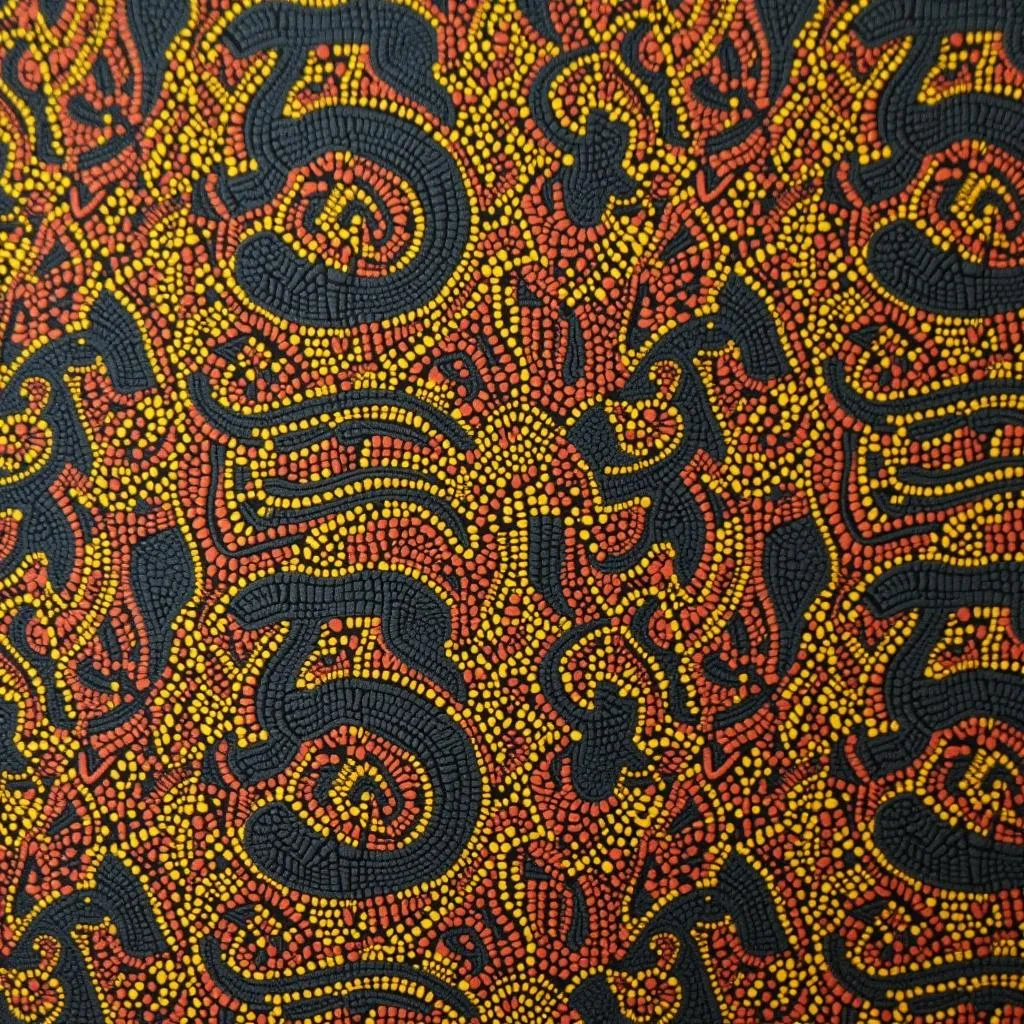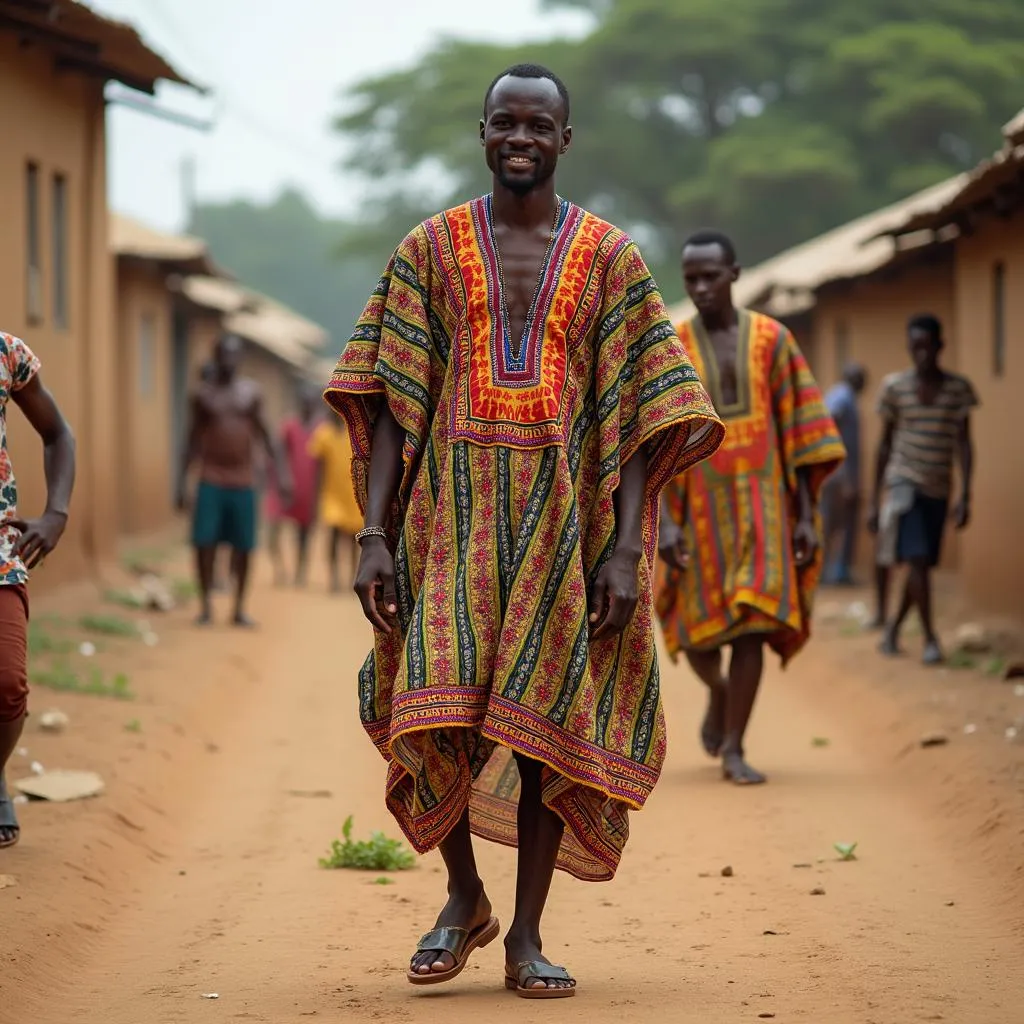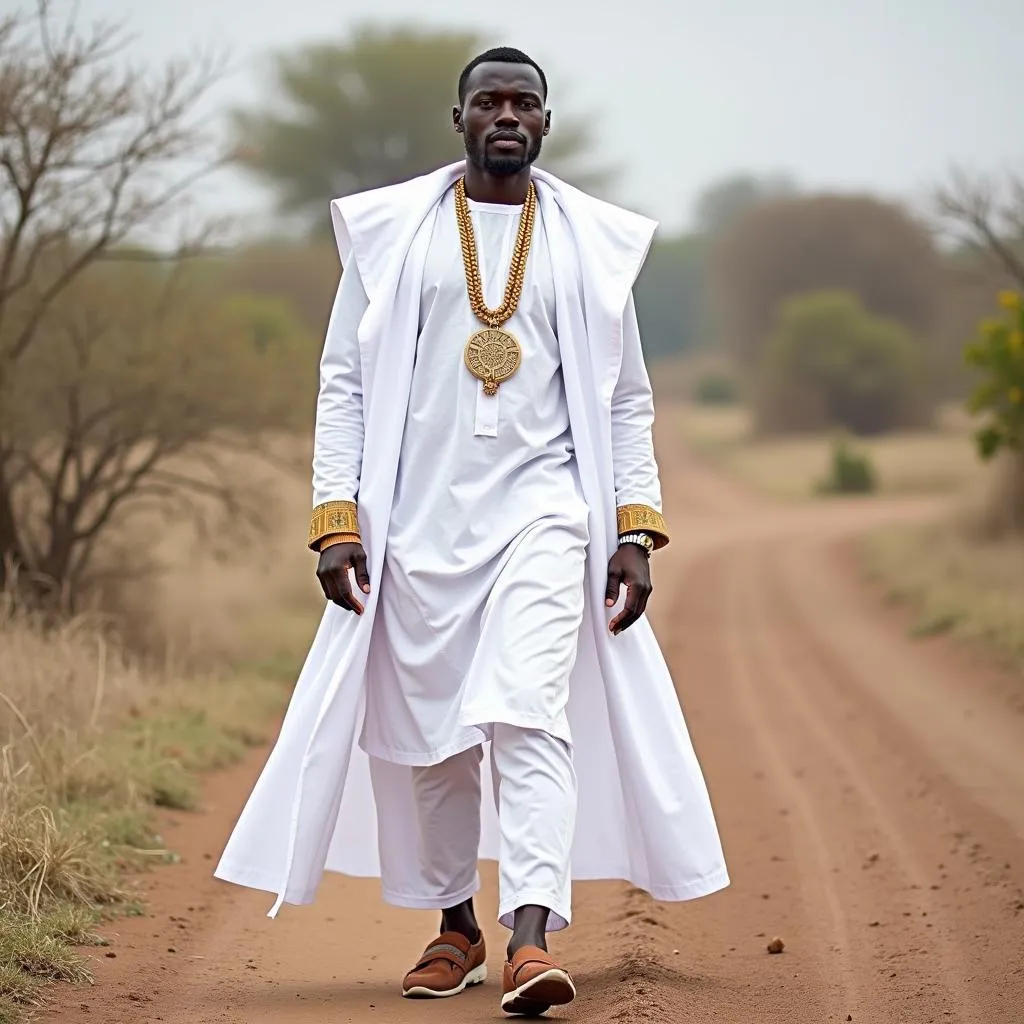African men’s traditional attire is a vibrant and diverse reflection of the continent’s rich cultural heritage. From the intricately woven fabrics to the symbolic designs, each piece tells a story and represents a unique identity. This article delves into the fascinating world of African traditional dress for men, exploring its history, significance, and the myriad styles that continue to captivate the world.
A Glimpse into the Past: Origins and Evolution
African traditional dress has deep roots in the continent’s history, evolving over centuries with each tribe and region developing its own distinct style. These garments were not just clothing; they served as a powerful symbol of status, social standing, and cultural identity.
“Traditional dress represents a deep connection to our ancestors, our traditions, and our land. It is more than just clothing; it’s a living embodiment of our heritage.” – Dr. Amina Salim, Historian and Cultural Anthropologist
The earliest forms of African dress were likely made from materials readily available in the environment, such as animal hides, bark cloth, and woven grasses. Over time, these evolved into more elaborate garments, incorporating fabrics like cotton, silk, and wool.
The Influence of Trade Routes
The trans-Saharan trade routes played a crucial role in the evolution of African dress. The introduction of new materials, like textiles from the Middle East and Asia, led to a blending of styles and techniques.
“The trade routes were like bridges connecting cultures and allowing the exchange of ideas, including fashion and textiles.” – Professor Ali Abdi, Expert on African Trade History
The Significance of Symbolism
Every element of African traditional dress holds a deeper meaning, carrying cultural significance that has been passed down through generations. From the colors used to the intricate patterns, each piece tells a story about the wearer’s tribe, social status, and beliefs.
Colors and Patterns: A Language of Identity
Colors often represent specific meanings and signify a person’s clan or tribe. For example, red may symbolize courage and power, while blue can represent peace and tranquility. The patterns woven into the fabrics also hold deep meaning, often depicting spiritual beliefs, historical events, or natural elements.
“ African traditional dress: Patterns and symbols“
African traditional dress: Patterns and symbols“
Exploring the Diversity of Styles
Across Africa, there is a wide range of traditional dress styles for men, each with its own unique characteristics.
The Dashiki: A Symbol of Pan-African Pride
The dashiki, a colorful, loose-fitting tunic, is a popular garment worn by men across Africa and the diaspora. It originated in West Africa and became a symbol of African identity and pride during the Pan-African movement of the 1960s.
“ Dashiki: A symbol of African pride“
Dashiki: A symbol of African pride“
The Kanzu: A Versatile and Elegant Garment
The kanzu, a long, white robe, is worn by men in East Africa, particularly in countries like Tanzania and Kenya. Made from cotton or silk, the kanzu is a versatile garment that can be worn for both formal and informal occasions.
“ Kanzu: A versatile and elegant robe“
Kanzu: A versatile and elegant robe“
The Enduring Legacy of African Traditional Dress
African traditional dress continues to play a vital role in contemporary society, serving as a link to the past and a celebration of cultural identity. It is worn for special occasions like weddings, festivals, and religious ceremonies, but it is also finding its way into modern fashion, inspiring designers and inspiring global trends.
Frequently Asked Questions
1. What are some of the most common materials used in African traditional dress for men?
Common materials include cotton, silk, wool, leather, and various types of woven grasses.
2. What are some of the key symbols and motifs found in African traditional dress?
Common symbols include geometric patterns, animal motifs, and representations of spiritual beings or ancestral figures.
3. How is African traditional dress evolving in the modern world?
Modern designers are increasingly incorporating traditional African textiles and designs into contemporary fashion, creating a fusion of traditional and modern styles.
4. Where can I find more information about African traditional dress?
You can find extensive information on websites dedicated to African culture, fashion blogs, and academic journals specializing in African studies.
Conclusion
African traditional dress for men is a testament to the continent’s rich and diverse cultural heritage. From its origins in the past to its influence on modern fashion, it continues to inspire and captivate the world. By understanding and appreciating the symbolism and artistry behind these garments, we can gain a deeper understanding and appreciation for the vibrant tapestry of African culture.
Leave a Reply